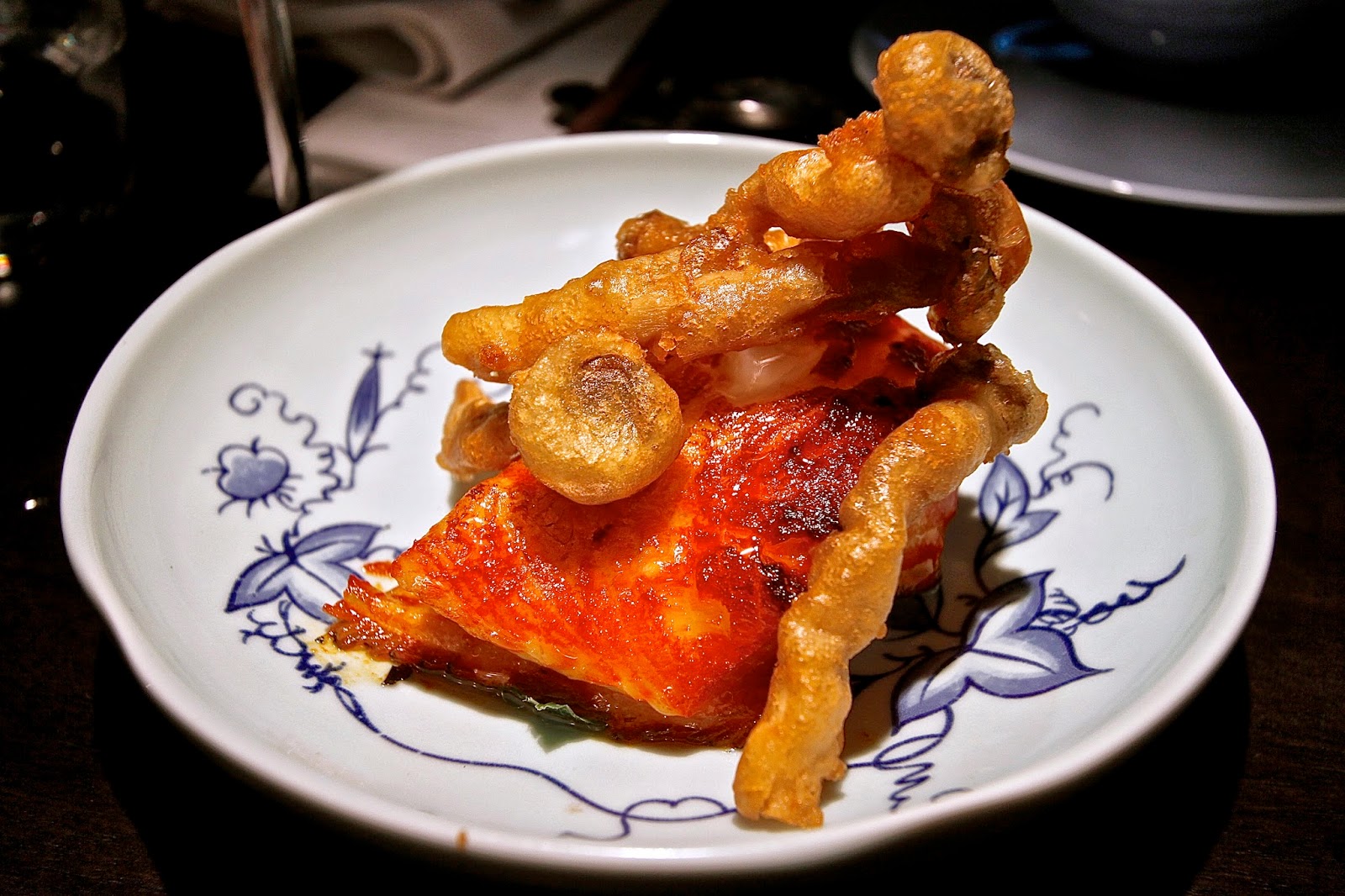Name: Hakkasan (Chinese New Year Menu)
Where: 8 Hanway Place, London, W1T 1HD, http://hakkasan.com
Cost: Hakkasan’s Chinese New Year menu consists of 4 courses, or 9 dishes, costs a lucky £88.88 per person, and includes a cocktail each.
About: Opened in 2001, Hakkasan has long been a favourite of mine for its exquisite dim sum and Chinese food and is one of the few places in London I return to often. Hakkasan is the jewel in the crown of its group, which also includes two other Michelin-starred restaurants – Yauatcha and HKK.
 |
| Celebrating the Year of the Monkey at Hakkasan |
I visited Hakkasan recently to experience their Dim Sum Sunday Menu (see review here). I believe this is still one of the best and most reasonably priced lunch menus in London right now – for £58 per person, guests can enjoy a 4 course lunch, ½ bottle of Champagne (or a full bottle between 2 people) and 2 cocktails each.
 Chinese New Year is a great time to visit Chinese restaurants of this calibre as many will have specially designed menus for the occasion. So I hurried along to Hakkasan Hanway Place to try their Year of the Monkey menu which is available from 22 January until 22 February 2016 only.
Chinese New Year is a great time to visit Chinese restaurants of this calibre as many will have specially designed menus for the occasion. So I hurried along to Hakkasan Hanway Place to try their Year of the Monkey menu which is available from 22 January until 22 February 2016 only.What We Ate: The CNY menu is divided into 4 courses – soup, dim sum, mains & accompaniments and dessert.
Course 1 - Soup of double-boiled fresh ginseng and chicken with bamboo pith and wolfberry
The broth had an intense chicken flavour with fresh ginseng root, which with its earthy, burdock-like flavour, was for me the highlight of the dish. I also enjoyed the gossamer-like texture of the bamboo pith.
Course 2 - Japanese Wagyu beef with pine nuts in a crispy golden cup and a selection of dim sum
With little pieces of Wagyu beef, stir-fried with tiny cubes of Chinese chives, peppers and onion served on crispy pastry cups, this had a delectable crunchiness, wok-breath and richly flavoured beef.
The dim sum arrived in a platter of four. The har gau were well presented and delicate, while the scallop shumai had a thick slice of plump scallop, with a scattering of tobiko eggs – the pastry was ethereally light and so fresh it melted in the mouth. The Chinese chive dumpling with prawn was also good, and the duck and yam bean dumpling had a great hit of cracked black pepper.
Course 3 - Selection of 4 main dishes plus 1 rice
The wok-fried lobster in a spicy truffle sauce had chunky nuggets of tender lobster that tasted deliciously buttery and were topped with slices of aromatic fresh black truffles, Chinese black fungus, choy sum and tiny pieces of crispy deep-fried pastry which added an extra layer of texture to the dish. This was without a doubt the highlight of our meal, and one of the best lobster dishes I have eaten recently.
The Pipa duck is a regular favourite at Hakkasan, with its lovely crispy caramel-like skin, a sweet little layer of fat, and richly flavoured, slightly gamey meat.
The grilled Chilean seabass was also terrific. With a honeyed, slightly charred exterior, and a buttery texture to the flesh, the fish came with a scattering of well-made tempura of shimeji mushrooms.
The vegetable dish was an intriguing stir-fry of Hericium mushroom, with a meaty texture and delicately earthy flavour, combined with lotus root, asparagus and lily bulb in black pepper.
The dried scallop and crabmeat fried rice was a luxurious accompaniment to the duck, fish, lobster and vegetable mains.
Course 4 – Dessert: The Golden Halo
A ring (halo) of soy caramel and peanut brittle, topped with banana delice ice cream, a sphere of chocolate mousse encased in a wafer-thin chocolate shell, and flakes of real edible gold leaf. This was a light but intricate dessert with intense flavours of banana, peanuts and caramel. A monkey’s delight!
What We Drank: The CNY menu features one '9 Hou' cocktail per person, included in the set price. Made from Eldorado 3 year old rum, Amontillado sherry, banana, guava, lime, agave syrup and walnut, this was complex, well balanced and refreshing.
With our meal, we shared a bottle of Sylvaner 'Sylvacello' 2012, from Cave de Turkheim, Alsace (£29) chosen by the sommelier. Straightforward, this had fresh, grapefruit notes but lacked any complexity.
Likes: the lobster dish was the highlight, the rice of dried scallops and crabmeat was also terrific.
Dislikes: none.
Verdict: With Wagyu beef, truffled lobster, Chilean seabass and the finest Peking duck, Chinese New Year menus don’t get much better than this. Don’t wait too long, this special Year of the Monkey menu by Hakkasan ends on 22nd February 2016. Highly recommended.





























































